Experience the Best Sahara Tents for an Unforgettable Desert Getaway
Discover the top Sahara tents for a unique desert getaway. Enjoy comfort under the stars and make yo...
Read this article
Suspendisse interdum consectetur libero id. Fermentum leo vel orci porta non. Euismod viverra nibh cras pulvinar suspen.

What is Morocco known for? This diverse country captures the imagination with its stunning landscapes, national symbols, and rich cultural heritage. The history of Morocco is shaped by a tapestry of diverse civilizations and influences, including Phoenicians, Romans, Arabs, and Europeans, which have all contributed to its unique identity. Located in the Maghreb region of North Africa, Morocco is also situated in Northwest Africa and is one of the few countries in the world with coastlines on both the Atlantic and the Mediterranean Sea; this unique position gives Morocco access to both Atlantic and Mediterranean maritime routes, enhancing its strategic importance and cultural diversity, and sharing deep historical and cultural ties with neighboring countries in this region.
From the Atlas Mountains to the Sahara Desert, Morocco's landscapes, Moroccan cuisine, and historic medinas, discover what makes Morocco truly unique in this article. Morocco’s cultural blend is further enriched by its historical and political significance in the Arab world, where it plays a prominent role in regional organizations and alliances.
Notably, Morocco holds the distinction of being the first country to recognize US sovereignty in 1777, underscoring its longstanding importance in international diplomacy. The history of Morocco reflects its evolution through Phoenician, Roman, Arab, and European civilizations, and today, the country remains at the center of ongoing territorial discussions, most notably the Western Sahara dispute.
Morocco is a beautiful country nestled in the Maghreb region of North Africa, where the Mediterranean Sea meets the Atlantic Ocean. This vibrant nation is renowned for its rich history, diverse culture, and breathtaking natural landscapes that captivate nature lovers and adventurers alike. From the snow-capped peaks of the Atlas Mountains to the rolling dunes of the Sahara Desert, Morocco offers a world of contrasts waiting to be explored.
Travelers are drawn to Morocco’s dynamic cities, such as Marrakech and Fez, where intricate patterns adorn historic medinas and bustling souks overflow with color and life. In larger cities, languages such as Arabic and French are widely spoken, reflecting Morocco’s linguistic diversity. The country’s unique blend of traditional and modern influences is reflected in its architecture, festivals, and daily life. Morocco’s national symbols, such as the red flag with a green star and the Barbary lion as Morocco’s national animal, are proudly displayed and celebrated, highlighting Morocco’s deep cultural heritage. Whether you’re wandering through ancient alleyways, savoring the flavors of Moroccan cuisine, or embarking on camel rides across the desert, every experience is steeped in the country’s rich cultural heritage.
Morocco’s appeal extends beyond its cities and landscapes. Morocco's beautiful beaches along both the Atlantic coast and the Mediterranean provide the perfect escape for those seeking relaxation. The country is also home to world-class ski resorts in the High Atlas Mountains, offering winter sports enthusiasts a unique opportunity to hit the slopes in North Africa.
With its warm hospitality, fascinating history, and endless opportunities for adventure, Morocco is a destination that invites you to visit, explore, and immerse yourself in the wonders of North Africa.
Morocco’s Atlas Mountains offer diverse trekking experiences and cultural immersion, showcasing Berber life and stunning landscapes.
The Sahara Desert provides unforgettable adventures, with activities like camel rides and overnight stays in traditional tents under the stars.
Moroccan cuisine is a rich blend of flavors influenced by various cultures. It emphasizes dishes like couscous and tagine and highlights the importance of spices and mint tea.
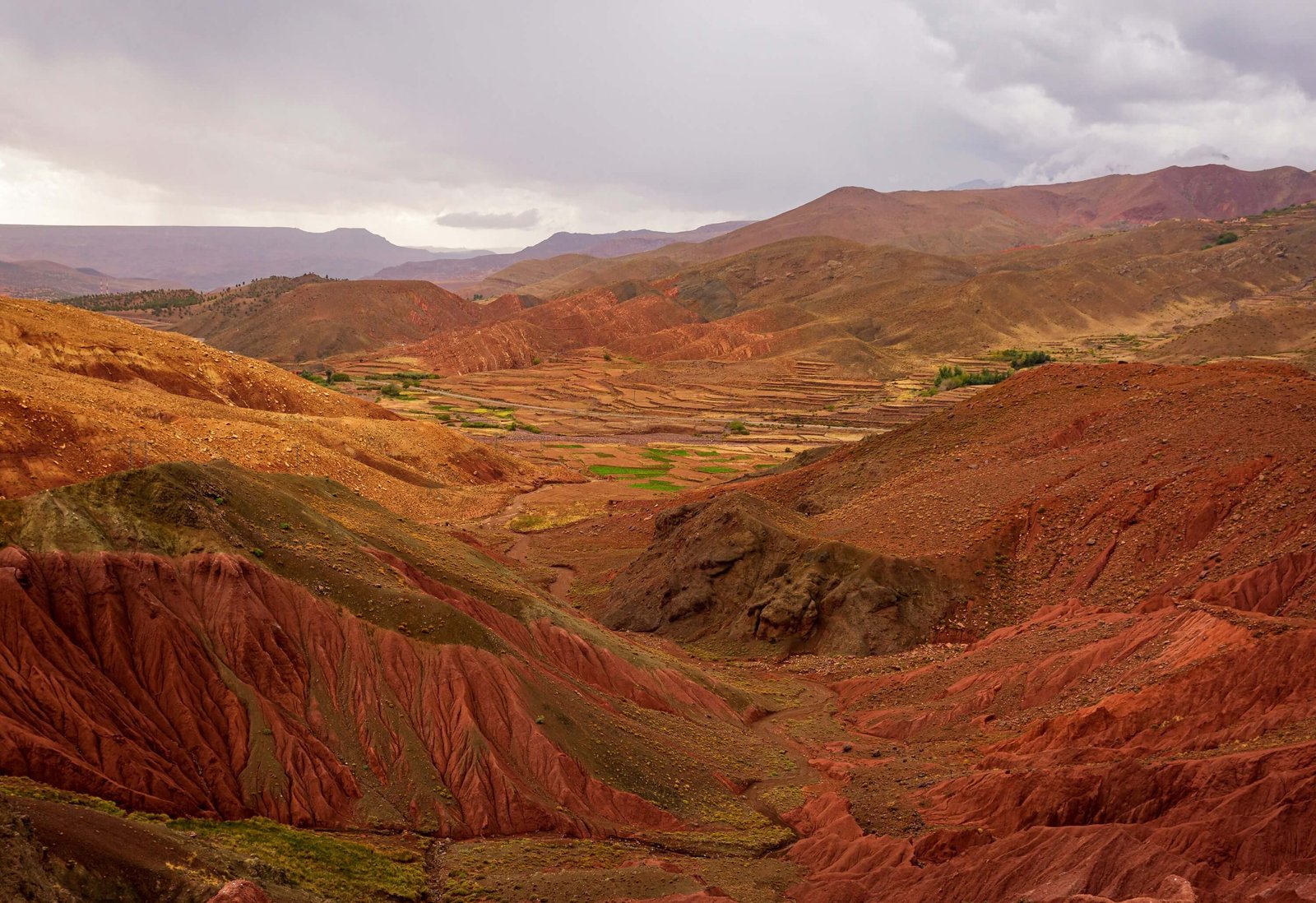
The Atlas Mountains, a majestic mountain range stretching across Morocco, Algeria, and Tunisia, are a sight to behold. Morocco’s section is divided into:
The Middle Atlas Mountains
The High Atlas Mountain Range, home to Mount Toubkal, the highest peak in North Africa, is known for breathtaking vistas and challenging trekking routes
The Anti-Atlas ranges
The northern regions of Morocco, particularly the Rif and Middle Atlas Mountains, are characterized by lush forests and a temperate, Mediterranean-influenced climate, offering a stark contrast to the arid southern and Sahara-adjacent areas. These ranges offer a stunning backdrop for adventure and cultural immersion.
Imlil, a popular base village, serves as a starting point for trails catering to different levels of hiking expertise. The terrain ranges from rugged paths to more accessible trails, allowing both seasoned trekkers and novices to explore the mountains. Along the way, you will encounter picturesque Berber villages, where time seems to stand still. These villages offer a glimpse into traditional Berber life, from their unique farming practices to their enduring cultural traditions.
Spring and autumn are the ideal seasons for trekking in the Atlas Mountains. The mild temperatures and stunning scenery make these times perfect for outdoor adventures. Hiking through the mountains presents opportunities to meet local Berber families and learn about their way of life. Trekking tours from Marrakech often include cultural immersion experiences, offering deeper insights into the rich heritage of the Berber people.
The Atlas Mountains are not only about trekking and cultural experiences. In winter, the slopes of Oukaïmeden, a ski resort in the High Atlas, come alive with snow sports enthusiasts. Morocco’s diverse landscape ensures something for everyone, from hiking and skiing to simply enjoying a warm cup of Moroccan mint tea while taking in the panoramic views.
The Atlas Mountains encapsulate adventure and cultural richness, making them an unmissable highlight of any trip to Morocco. Whether you’re seeking the thrill of reaching Mount Toubkal’s summit or the serenity of a Berber village, the Atlas Mountains will leave you in awe.
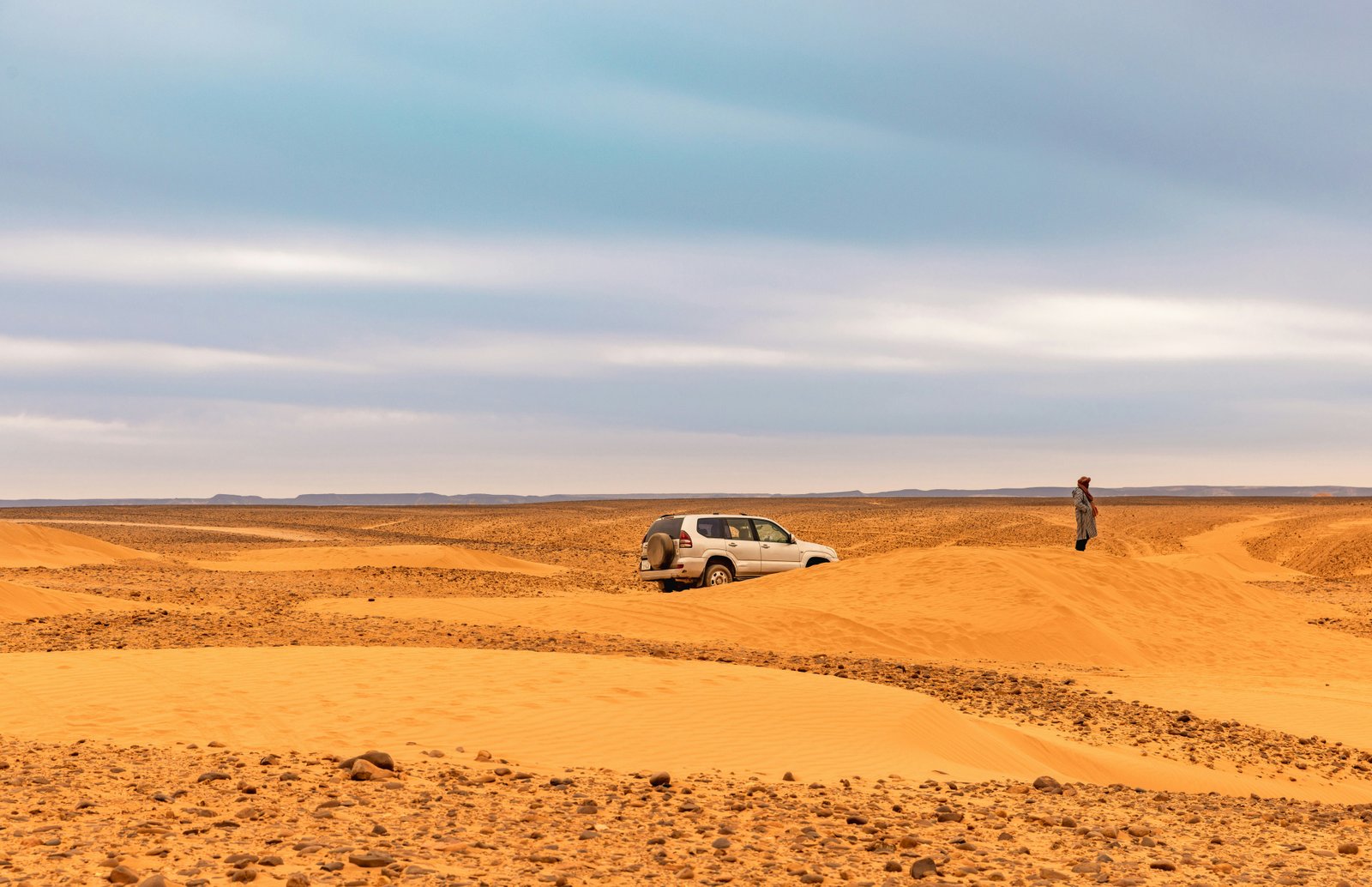
Morocco's Sahara Desert, the world’s largest hot desert, stretches across northern Africa, covering parts of Morocco with endless dunes, rocky plains, and oases that beckon adventurers and nature lovers alike in desert areas. The Moroccan Sahara offers some of the most mesmerizing and unforgettable experiences.
Merzouga is a quite small village located on the edge of the vast Sahara Desert. It’s best known for the stunning Erg Chebbi dunes, which are among the tallest dunes in Morocco. These golden dunes are a playground for various desert activities, from camel rides to sandboarding. Traversing the undulating sands on the back of a camel feels like stepping into a timeless, mystical world.
Historically, the Barbary lion, once native to Morocco and the Sahara region, roamed these landscapes. Now extinct in the wild, the Barbary lion remains a national emblem of Morocco and symbolizes the country’s rich biodiversity and ongoing conservation efforts.
Zagora, often referred to as the gateway to the Sahara, is another popular starting point for desert excursions. Here, visitors can embark on overnight trips into the desert, sleeping under the stars in traditional Berber tents. Waking up to a breathtaking desert sunrise is an experience that stays with you long after you’ve left the Sahara.
Marrakech serves as the easiest gateway to the Moroccan desert, with many tours offering comprehensive packages that include transportation, guided camel rides, and stays in desert camps. Exploring the vast dunes of Erg Chebbi or experiencing the tranquility of the Palmeraie oasis near Marrakech, the Sahara Desert promises an adventure like no other.
Moroccan cuisine is a delightful fusion of flavors and aromas, influenced by the country’s diverse cultural heritage. Morocco's culinary traditions blend Berber, Moorish, Arab, and Mediterranean influences, creating a unique and tantalizing gastronomic experience.
One of the most iconic Moroccan dishes is couscous, the national dish, traditionally steamed above a pot of boiling water. This versatile dish can be served with a variety of meats and vegetables, making it a staple in Moroccan households. Tagine, another popular dish, is named after the clay pot it’s cooked in. This slow-cooked stew, often made with chicken, beef, or lamb, is rich in spices and flavors, and is typically shared among diners in a communal setting. Moroccan food is celebrated for its unique blend of ingredients and cooking techniques.
Spices are crucial in Moroccan cuisine, with each dish featuring a carefully balanced blend of flavors. Common spices include:
Cumin
Turmeric
Saffron
Cinnamon. These spices are used to enhance the taste of meats, vegetables, and even desserts.
Bread is an essential part of every meal, often used to scoop up food instead of utensils. Olive oil is another staple, enriching dishes with its robust flavor.
No meal in Morocco is complete without a cup of Moroccan mint tea. This refreshing beverage, brewed with green tea, fresh mint leaves, and a generous amount of sugar, is a symbol of Moroccan hospitality and culture. Indulging in a flavorful tagine or sipping on mint tea, Moroccan cuisine offers a sensory journey that reflects the country’s rich cultural tapestry.
Morocco's medinas are ancient walled cities, often referred to as the ‘old city,’ brimming with history and culture. These labyrinthine quarters are characterized by their narrow streets, bustling markets, and stunning architecture. Exploring the old medina is like stepping back in time, offering a glimpse into the daily lives of Moroccans.
The souks, or markets, within the medinas buzz with activity, offering a wide array of goods such as:
Spices
Textiles
Artisan crafts
Jewelry
Shopping in the souks is an experience in itself, involving the art of bartering. Each vendor typically starts with an asking price, which is almost always negotiable. Haggling is an essential part of the process, adding to the excitement of the shopping experience. However, bargaining is not expected in places like a gas station, grocery stores, or malls, where prices are fixed.
Wandering through the medinas, you’ll encounter a sensory overload of sights, sounds, and smells. The narrow streets are lined with shops and stalls, each offering unique products and treasures. In Marrakech, the markets are famous for their snake charmers, adding to the exotic atmosphere. Vehicles are banned in these areas, and goods are often transported by mules, adding to the old-world charm of the medinas.
Exploring the souks on your own, without relying on local guides, allows direct engagement with vendors and full immersion in the vibrant atmosphere of the Fez medina, one of the world’s oldest medieval cities and a UNESCO World Heritage site. In Marrakech, Fez, or Casablanca, Morocco's historic medinas and souks offer a captivating journey through the country’s rich cultural heritage.
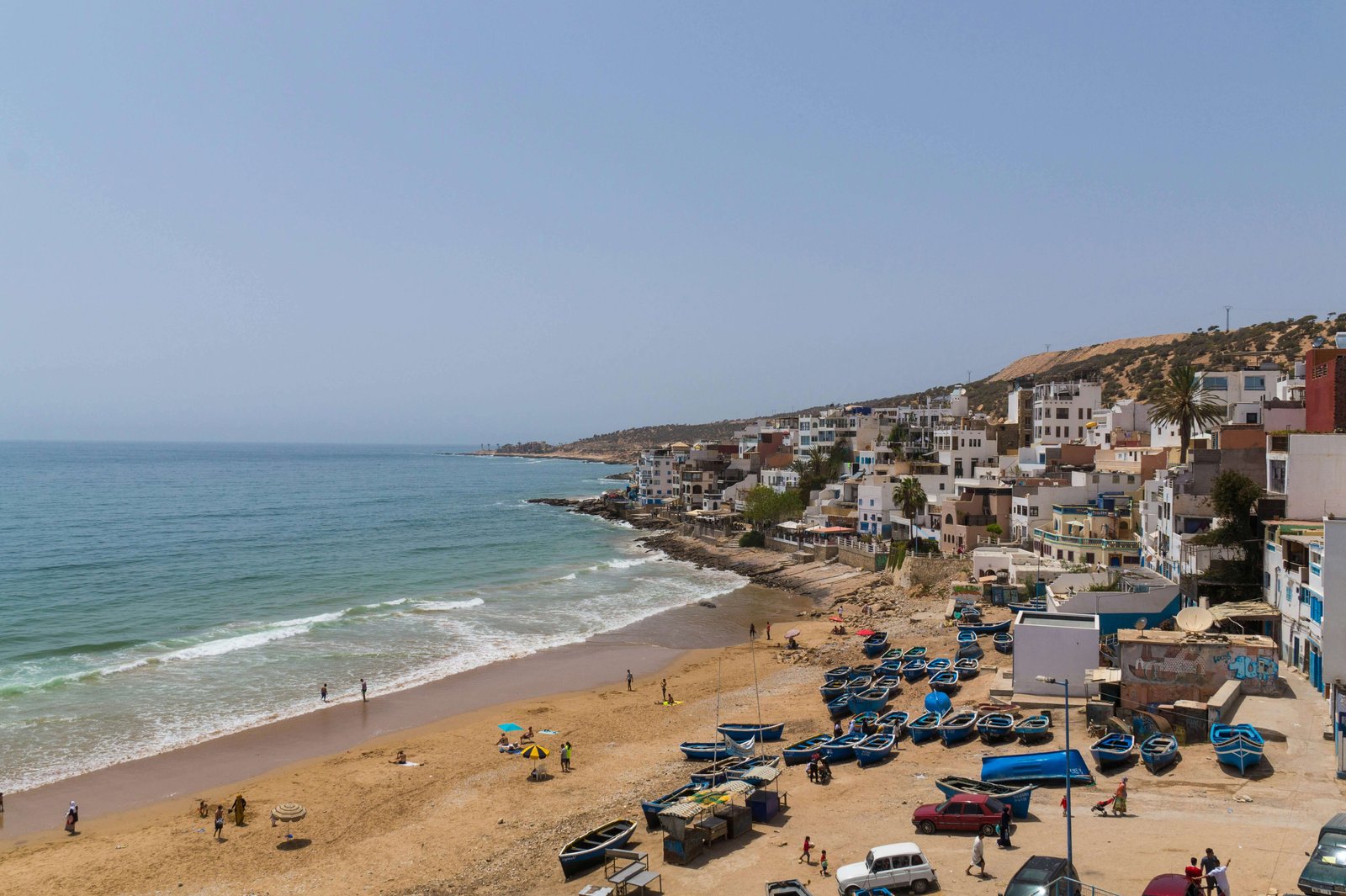
Morocco’s Atlantic coast is a haven for beach lovers, offering a diverse range of coastal experiences. With coastlines along both the Atlantic and Mediterranean seas, Morocco enjoys a unique geographical position that enhances its maritime appeal. The Atlantic coast offers everything from bustling resort towns to tranquil, secluded beaches.
Casablanca, Morocco’s largest city and main port, stands out as a major economic and cultural hub along the Atlantic coast. Its vibrant urban life and significant landmarks make it an essential stop for visitors exploring the region.
Essaouira, a charming coastal town, is renowned for its consistent winds, making it a top destination for surfers and windsurfers. The town’s laid-back atmosphere and historic medina add to its appeal, making it a perfect spot for relaxation and adventure.
Further south, Imsouane boasts the longest right-hand surf wave in Morocco, attracting surfers from around the world. Taghazout, another popular surf destination, offers numerous surf spots and a vibrant atmosphere, ideal for both surfing and unwinding.
Agadir Beach, with its fine golden sand and excellent conditions for sunbathing and watersports, is a favorite among tourists. Catching the perfect wave or simply soaking up the sun, Morocco’s beautiful country along the Atlantic coast promises unforgettable beach experiences.
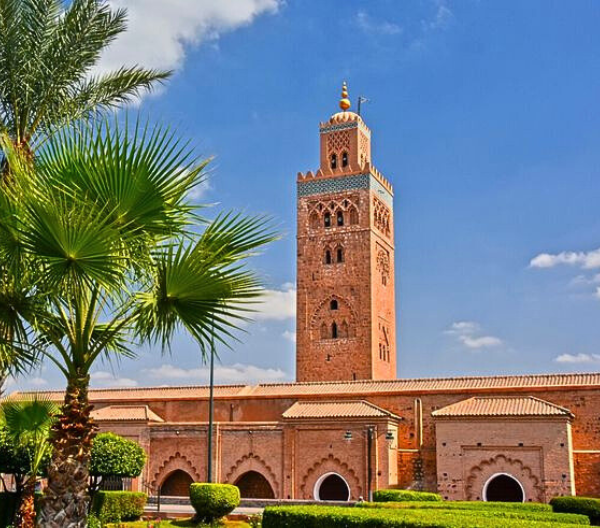
Morocco’s culture is a rich tapestry woven from various influences, including Arab, Berber, Jewish, French, and Spanish. Morocco's cultural diversity is reflected in the country’s traditions, art, and daily life, offering visitors a multitude of unique experiences.
One such experience is the Gnaoua Music Festival in Essaouira, which celebrates traditional African music and draws international visitors. The festival promotes Moroccan musical heritage and provides a platform for cultural exchange.
In cities like Chefchaouen, visitors can explore unique architecture and vibrant daily life influenced by a mix of cultures, including a strong Berber presence. Traditional Arabic calligraphy workshops are another way to immerse yourself in Moroccan culture, allowing you to explore this prestigious art form that reflects the country’s rich heritage. Morocco is home to a diverse array of experiences.
Attending a music festival or learning the art of calligraphy, Morocco, a country, offers an array of cultural experiences that enrich your journey.
Morocco is celebrated not only for its rich history and vibrant culture, but also for its time-honored approach to beauty and wellness—a tradition shaped by centuries of Berber, Arab, and Mediterranean influences. From the rolling dunes of the Sahara Desert to the snow-capped peaks of the Atlas Mountains, Moroccan culture places a special emphasis on self-care, natural ingredients, and communal rituals that have stood the test of time.
One of Morocco’s most prized beauty secrets is argan oil, often called “liquid gold.” Sourced exclusively from the argan trees of southwestern Morocco, this nourishing oil is packed with antioxidants and essential fatty acids. For generations, Moroccans have used argan oil to moisturize skin, strengthen hair, and protect against the desert climate. Today, it’s a staple in beauty routines around the world, but there’s nothing quite like experiencing it in its country of origin.
No exploration of Moroccan wellness is complete without a visit to a traditional hammam. These steam-filled bathhouses, adorned with intricate patterns and tiles, are a cornerstone of Moroccan life. The hammam ritual involves a series of cleansing steps: steaming, exfoliating with black soap and a kessa glove, and rinsing with cool water. It’s a deeply relaxing experience that leaves your skin glowing and your spirit refreshed. More than just a spa treatment, the hammam is a social gathering place where friends and family come together, reflecting the communal heart of Moroccan culture.
Wellness in Morocco extends to the kitchen, where Moroccan cuisine is crafted with health and flavor in mind. Spices like cumin, turmeric, and saffron not only add depth to dishes but also offer natural health benefits. Olive oil, another Moroccan staple, is used generously in cooking and is renowned for its nourishing properties. And of course, no visit is complete without sipping on Moroccan mint tea—a fragrant blend of green tea and fresh mint leaves, known for its soothing and digestive qualities. Sharing mint tea is a cherished tradition, symbolizing hospitality and connection.
In larger cities such as Marrakech and Casablanca, modern spas and wellness centers have flourished, blending traditional Moroccan techniques with contemporary treatments. Many of these establishments offer massages, facials, and yoga classes, often using local ingredients like argan oil and rose water. The Amal Center in Marrakech stands out not only for its wellness services but also for its social mission—empowering women through training and employment, and even offering workshops where you can craft your own tote bag as a meaningful souvenir.
For nature lovers, Morocco’s landscapes offer endless opportunities to rejuvenate body and mind. Trekking through the High Atlas mountain range, visiting Berber villages, or embarking on camel rides across the Sahara Desert allows you to connect with the land and its people. The ascent of Mount Toubkal, the highest peak in North Africa, is a rewarding challenge for those seeking both adventure and tranquility.
In every corner of this beautiful country, from the bustling cities to the serene desert, Morocco’s approach to beauty and wellness is a reflection of its rich history, diverse culture, and deep respect for nature. Whether you’re indulging in a hammam, sampling the flavors of Moroccan cuisine, or exploring the great outdoors, you’ll find countless ways to relax, restore, and be inspired by the spirit of Morocco.
Morocco is a true shopper’s paradise, where every winding alley and bustling square offers a new discovery. For those eager to bring home a piece of Moroccan culture, Morocco's markets and boutiques are filled with treasures that reflect its rich history and vibrant traditions. Whether you’re wandering the old medina in Fez or Marrakech, exploring the artisan stalls of Berber villages in the Atlas Mountains, or browsing the modern Morocco Mall in Casablanca, shopping in Morocco is an adventure in itself.
The old medina is the heart of Moroccan shopping, with its labyrinth of narrow streets lined with vendors selling everything from traditional Moroccan rugs to beautifully crafted leather goods. These handmade rugs, woven with intricate patterns by skilled artisans, are not only stunning works of art but also a testament to Morocco’s enduring craftsmanship. Each rug tells a story, making it a meaningful souvenir to bring home from your trip.
Argan oil is another must-have, renowned worldwide for its nourishing properties and produced exclusively in Morocco. You’ll find argan oil in its pure form, as well as in a variety of cosmetics and skincare products—perfect for those looking to take a bit of Moroccan beauty home. In the High Atlas Mountains, nature lovers can visit Berber villages where local markets offer unique handicrafts, from handwoven baskets to vibrant pottery, all made using traditional techniques passed down through generations.
For a shopping experience with a social impact, the Amal Center in Marrakech is a wonderful stop. Here, you can shop for handmade tote bags and accessories, knowing your purchase supports local women and community initiatives. Meanwhile, the Morocco Mall in Casablanca offers a blend of international brands and local boutiques, making it easy to find both modern and traditional Moroccan items under one roof. The coastal city of El Jadida is also known for its charming shops filled with local crafts and ceramics, perfect for those seeking something truly unique.
When shopping in Morocco, don’t be shy about haggling—negotiating the asking price is a cherished part of the experience, especially in the old medina. Having a local guide can be invaluable, helping you navigate the maze of stalls and ensuring you get the best value for your purchases. Take your time to explore, sample some mint tea or Moroccan coffee as you browse, and soak in the lively atmosphere that makes Moroccan markets so unforgettable.
Morocco is a true playground for outdoor enthusiasts, offering a wealth of activities set against some of the most stunning backdrops in North Africa. Whether you’re drawn to the rugged peaks of the Atlas Mountains, the sweeping dunes of the Sahara Desert, or swimming pools in Marrakech with breathtaking Atlas Mountain views, Morocco’s diverse landscapes invite adventure at every turn.
For those who love to explore on foot, the Atlas Mountains provide endless trekking and hiking opportunities. Trails wind through dramatic valleys, past cascading waterfalls, and into remote Berber villages, allowing you to experience the heart of Moroccan culture while surrounded by breathtaking scenery. The High Atlas mountain range is especially popular for multi-day hikes, with Mount Toubkal standing as a bucket-list challenge for many nature lovers.
In the vast expanse of the Sahara Desert, adventure takes on a different form. Camel rides across golden dunes offer a timeless way to experience the desert’s magic, while sandboarding down the slopes of Erg Chebbi adds a rush of excitement. For a truly unforgettable night, many travelers opt for a desert camp stay, where you can watch the stars light up the sky in one of the world’s most awe-inspiring settings.
Morocco’s outdoor activities aren’t limited to mountains and desert areas. Along the Atlantic and Mediterranean coasts, surfing, windsurfing, and kitesurfing are popular pastimes, with spots like Taghazout and Essaouira drawing enthusiasts from around the world. If you visit in winter, the ski resorts in the High Atlas Mountains offer a unique chance to hit the slopes in North Africa.
Whether you’re scaling mountain peaks, riding camels through the Sahara Desert, or catching waves on the Atlantic coast, Morocco’s natural beauty and adventurous spirit promise unforgettable experiences for every traveler.
A visit to one of Morocco's traditional hammams is a quintessential part of the Moroccan experience. These steam rooms, designed for cleansing and relaxation, offer a unique way to unwind and rejuvenate.
The typical hammam experience involves a series of steps:
Start with a steam bath to open the pores.
Follow with a thorough scrub using black soap and a kessa glove to exfoliate the skin.
Apply Rhassoul clay, known for its antibacterial properties, to detoxify the skin, leaving it soft and smooth.
Finish by rinsing off and applying nourishing argan oil to hydrate the skin.
Hammams vary from basic public baths to luxurious spa-like facilities, catering to different preferences and budgets. The hot steam in hammams enhances circulation and helps release toxins from the body, providing a deeply relaxing and purifying experience.
Whether visiting a local guide hammam in a medina or a high-end spa, experiencing Morocco's wellness culture through its hammams offers a unique glimpse into the country's rich traditions.
The history of Morocco is reflected in its stunning architecture and ancient monuments. The history of Morocco includes the legacy of ancient civilizations such as the Phoenicians and Romans, the Arab conquest, and Morocco's architectural evolution, especially in its capital cities. Diverse geography and historical influences have given rise to Morocco’s unique architectural style, both intricate and awe-inspiring.
One of Morocco’s most iconic monuments is the Hassan II Mosque in Casablanca, the largest mosque in Morocco and the tallest in Africa. Notably, it is partly built over the Atlantic Ocean, offering breathtaking views and a serene atmosphere. The mosque is open to most visitors, allowing everyone to appreciate its grandeur and intricate designs, which reflect the principles of islam. Under the reign of Mohammed VI, Morocco’s architectural and cultural landscape has seen significant modernization, with the Hassan II Mosque standing as a symbol of this progress.
Another significant site is the Kasbah of Taourirt, a 17th-century fortress recognized as a World Heritage site. This ancient structure showcases traditional Moroccan architecture and provides insight into Morocco’s historical significance. Morocco’s royal family claims descent from the Islamic prophet Muhammad, a lineage that has shaped the country’s dynasties and cultural identity. El Jadida, with its Portuguese cistern, is another of Morocco’s cultural heritage monuments that once served as an arsenal.
The influence of various civilizations, including Phoenician, Roman, and Arab, can be seen in Morocco’s monuments. Cities like Fez and Meknes are home to significant historical and educational landmarks, contributing greatly to Morocco’s cultural heritage. Exploring the intricately designed arabesque doors in Fez or the Roman ruins in Meknes, Morocco’s ancient monuments offer a fascinating journey through history.
Al-Qarawiyyin University in Fez holds the distinction of being the world’s first university, founded in 859 AD by Fatima al-Fihri. This remarkable institution has been a center of learning for over a millennium, emphasizing its historical and educational significance.
Today, Morocco's Al-Qarawiyyin University continues to attract students from around the globe. Its rich legacy and enduring commitment to knowledge make it a symbol of Morocco’s intellectual heritage and a must-visit for those interested in the history of education.
Moroccan craftsmanship is renowned for its diversity and quality, with each region offering unique styles and materials. Key highlights include:
The ancient tanneries of Fez, famous for producing high-quality leather goods using traditional methods.
Visitors can observe the tanning process at the Chaouara Tannery.
This offers insight into the craftsmanship and labor involved.
Many artisan organizations and cooperatives have been established for over a decade, demonstrating their stability and credibility in preserving traditional crafts.
Traditional Moroccan crafts include:
Moroccan rugs, highly sought-after in the souks, with each rug telling a story through its intricate patterns and designs.
Safi’s multicolored pottery showcases a fusion of Amazigh and Andalusian influences.
Fes’s hand-painted pottery and tagine pots featuring designs that reflect local culture and traditions.
The markets of Marrakech offer a vibrant array of handcrafted items, from jewelry to woven objects made from wicker and raffia. Shopping in these artisan markets is not just about purchasing souvenirs; it’s about experiencing the rich cultural heritage of Morocco through its crafts. Tote bags are especially popular as souvenirs, often supporting local causes. The Amal Center tote bag, for example, is a charitable souvenir that supports the nonprofit’s mission to empower women and aid earthquake relief efforts in Marrakech.
Morocco’s sense of community is at the heart of its culture, shaped by a tapestry of Arab, Berber, and African influences. Family ties, respect for tradition, and a spirit of hospitality define daily life across the country. This strong social fabric is evident in the way Moroccans come together to celebrate festivals, share meals, and support one another.
The Moroccan government has made significant strides in promoting social development, investing in education and healthcare to improve the quality of life for its citizens. These efforts have contributed to a steady rise in living standards and poverty reduction, helping to build a brighter future for communities throughout the country.
Morocco’s vibrant arts and crafts scene is another testament to its rich cultural heritage. In the old medina of Fez and other historic centers, skilled artisans create exquisite leather goods, handwoven rugs, and a variety of handcrafted items that reflect centuries-old traditions. Shopping in these bustling markets not only allows visitors to bring home unique treasures but also supports local families and preserves traditional crafts.
Organizations like the Amal Center play a vital role in empowering women by providing training and employment opportunities in traditional Moroccan crafts. By choosing to shop at local markets, stay in family-run riads, and engage with community initiatives, travelers can make a meaningful impact and help sustain Morocco’s cultural legacy.
Whether you’re admiring the intricate designs of a Berber rug, bargaining for leather goods in a medina, or simply enjoying the warmth of Moroccan hospitality, your visit contributes to the ongoing story of this remarkable country and its people.
Morocco is a land of contrasts and wonders, offering a rich tapestry of experiences that cater to all interests. From the majestic Atlas Mountains and the enchanting Sahara Desert to the vibrant cuisine and historic medinas, Morocco's beauty and cultural depth captivate every traveler. Whether you’re seeking adventure, relaxation, or cultural immersion, Morocco promises an unforgettable journey that will leave you longing for more.
The best time to visit the Atlas Mountains for trekking is in spring and autumn, when mild temperatures and stunning scenery enhance your outdoor experience.
You can experience camel rides, sandboarding, and breathtaking sunrises in the Sahara Desert, with Merzouga and Zagora as popular starting points for these adventures.
You should definitely try couscous, tagines, and Harira, as these dishes showcase the rich regional flavors of Moroccan cuisine. Don't forget to pair them with traditional Moroccan mint tea for an authentic experience.
To truly experience traditional Moroccan culture, immerse yourself in the vibrant medinas and souks by actively engaging in bartering for spices, textiles, and crafts. This hands-on participation will deepen your appreciation for the sights, sounds, and smells that define the Moroccan experience.
You can discover a diverse array of artisan crafts in Moroccan markets, such as exquisite leather goods, traditional rugs, and vibrant pottery. Each piece reflects the rich cultural heritage and craftsmanship of Morocco.
Moroccan culture is a vibrant tapestry woven from centuries of Arab, Berber, and European influences, shaped by the country’s unique position in North Africa. Nestled between the Mediterranean Sea and the Atlantic Ocean, Morocco’s diverse geography—from the rolling dunes of the Sahara Desert to the snow-capped peaks of the Atlas Mountains—has played a defining role in the daily life and traditions of its people.
The heart of Moroccan culture beats in its cities and villages, where ancient customs blend seamlessly with modern life. In the bustling medinas of Marrakech and Fez, the old city walls enclose a world of narrow alleyways, lively souks, and historic landmarks. Here, the air is filled with the scent of spices, leather goods, and freshly baked bread, while artisans craft intricate rugs, pottery, and other handcrafted items using techniques passed down through generations. The souks are a sensory feast, offering everything from traditional Moroccan lanterns to vibrant textiles, and haggling over the asking price is all part of the experience.
Moroccan cuisine is a cornerstone of the country’s cultural identity, celebrated for its bold flavors, aromatic spices, and communal spirit. Dishes like tagines, couscous, and harira soup are staples at family gatherings and festive occasions, often enjoyed with a steaming glass of Moroccan mint tea. This sweet, fragrant tea is more than just a drink—it’s a symbol of hospitality and friendship, served to guests as a gesture of welcome. The use of spices such as cumin, saffron, and cinnamon, along with local ingredients like olive oil and preserved lemons, gives Moroccan food its distinctive character and global appeal.
Life in Morocco is marked by a deep sense of community and hospitality. Moroccans are renowned for their warmth and generosity, always eager to share their culture and traditions with visitors. Whether you’re exploring the vibrant streets of Casablanca—the country’s largest city and home to the impressive Morocco Mall—or relaxing in a Berber village in the High Atlas Mountains, you’ll find that hospitality is at the core of Moroccan life.
For nature lovers, Morocco is a paradise of contrasts. The Atlas Mountains, including the High Atlas and Middle Atlas ranges, offer endless opportunities for trekking, skiing, and exploring traditional Berber villages. The Sahara Desert, with its vast sand dunes and star-filled skies, invites travelers to experience the timeless beauty and nomadic heritage of northern Africa. Along the Atlantic coast, picturesque towns like El Jadida provide a tranquil escape, while the Mediterranean coastline offers sun-drenched beaches and fresh seafood.
Morocco’s rich history is evident in its ancient monuments, educational institutions, and vibrant cities. The University of Al-Qarawiyyin in Fez, recognized as the oldest continuously operating university in the world, stands as a testament to the country’s long-standing commitment to learning and scholarship. Throughout Morocco, historical landmarks and architectural marvels tell the story of a nation at the crossroads of civilizations.
The country’s economy is as diverse as its landscapes, with agriculture, manufacturing, and tourism all playing vital roles. Morocco is known for its production of phosphates, textiles, and traditional crafts, while its well-developed tourism industry attracts millions of visitors each year. From luxury hotels to family-run guesthouses, Morocco offers a range of accommodations to suit every traveler.
In every corner of this beautiful country, from the lively markets of Marrakech to the tranquil oases of the Sahara Desert, Morocco’s unique blend of tradition and modernity creates an unforgettable experience. Whether you’re drawn by the rich history, the flavors of Moroccan cuisine, or the breathtaking natural beauty, a visit to Morocco is sure to leave a lasting impression and inspire a deeper appreciation for the culture and lifestyle of this remarkable nation.
Morocco is home to some of the most breathtaking natural wonders in North Africa, making it a dream destination for nature lovers and adventurers alike. From the sweeping sand dunes of the Sahara Desert to the rugged peaks of the Atlas Mountains and the sparkling shores of the Mediterranean Sea and Atlantic Ocean, Morocco’s landscapes are as diverse as its rich history.
The legendary Sahara Desert, stretching across much of North Africa, is a must-visit for anyone seeking awe-inspiring beauty and adventure. Here, endless sand dunes create a mesmerizing landscape, perfect for camel rides at sunrise or sunset. The desert’s tranquil silence and golden hues offer a unique escape from the bustle of city life, while nights spent under the stars in traditional Berber camps provide an unforgettable glimpse into Morocco’s nomadic heritage.
To the north, the majestic Atlas Mountains rise dramatically, dividing the country and offering a haven for hikers, trekkers, and explorers. The High Atlas Mountains are especially renowned, with Mount Toubkal standing as the highest peak in North Africa. Adventurous travelers can embark on challenging climbs or scenic treks through valleys dotted with traditional Berber villages, where ancient customs and warm hospitality await. Exploring these mountain trails not only rewards you with panoramic views but also connects you to the heart of Moroccan culture.
Morocco’s coastline is equally captivating, bordered by both the Mediterranean Sea and the Atlantic Ocean. The Mediterranean coast, with its picturesque beaches and crystal-clear waters, is ideal for swimming, sunbathing, and water sports. Meanwhile, the Atlantic coast offers a different charm, with dramatic cliffs, rolling waves, and vibrant fishing villages where you can experience the rhythms of local life. Surfing enthusiasts flock to the Atlantic for its world-class waves, while those seeking tranquility can find hidden coves and peaceful stretches of sand.
Whether you’re exploring the vast desert, trekking through the high mountain passes, or relaxing by the sea, Morocco’s natural wonders are a testament to the country’s incredible diversity and enduring allure. Each landscape tells a story, inviting you to discover the beauty, adventure, and cultural richness that make Morocco a truly unforgettable destination.
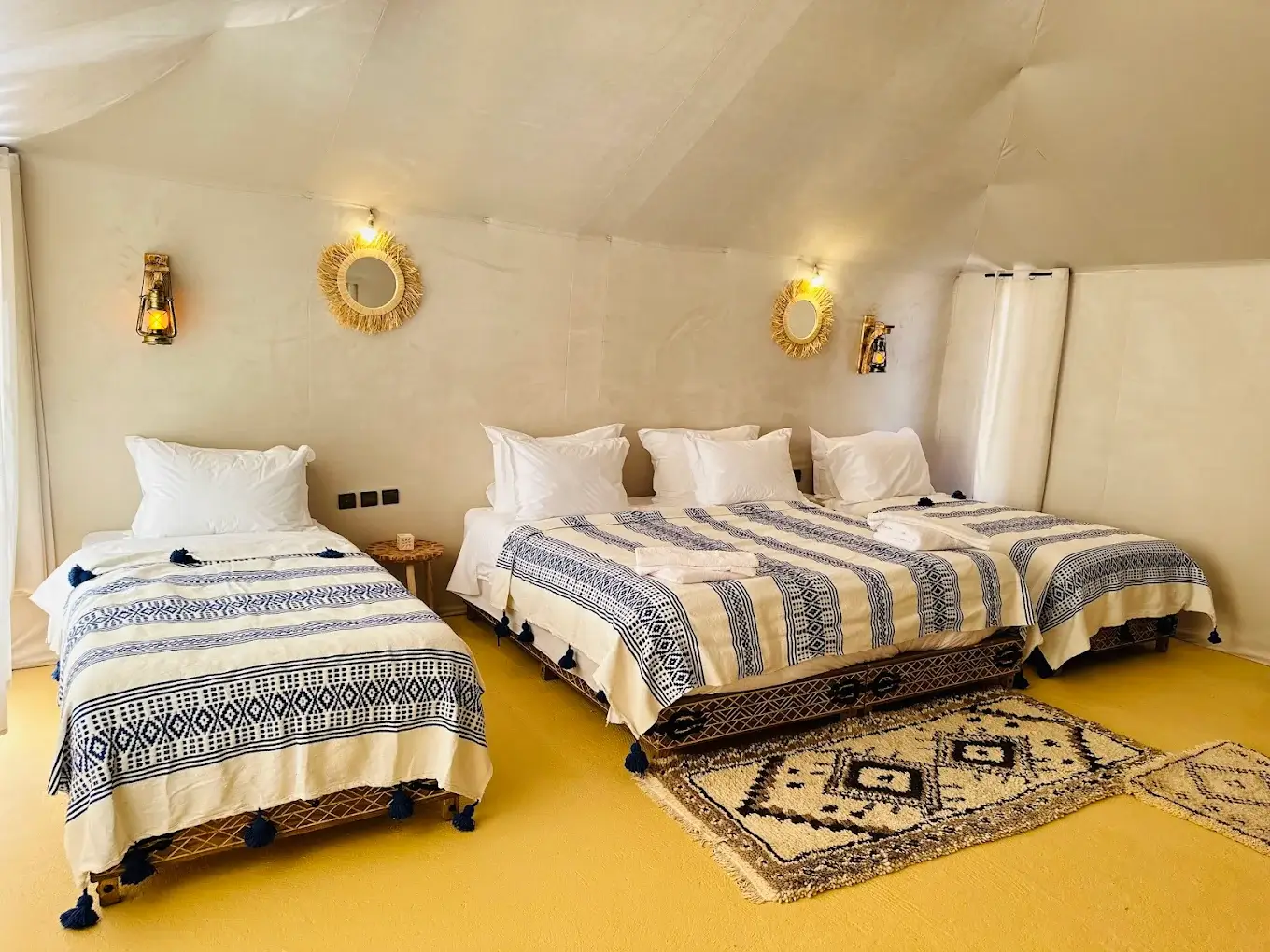
Discover the top Sahara tents for a unique desert getaway. Enjoy comfort under the stars and make yo...
Read this article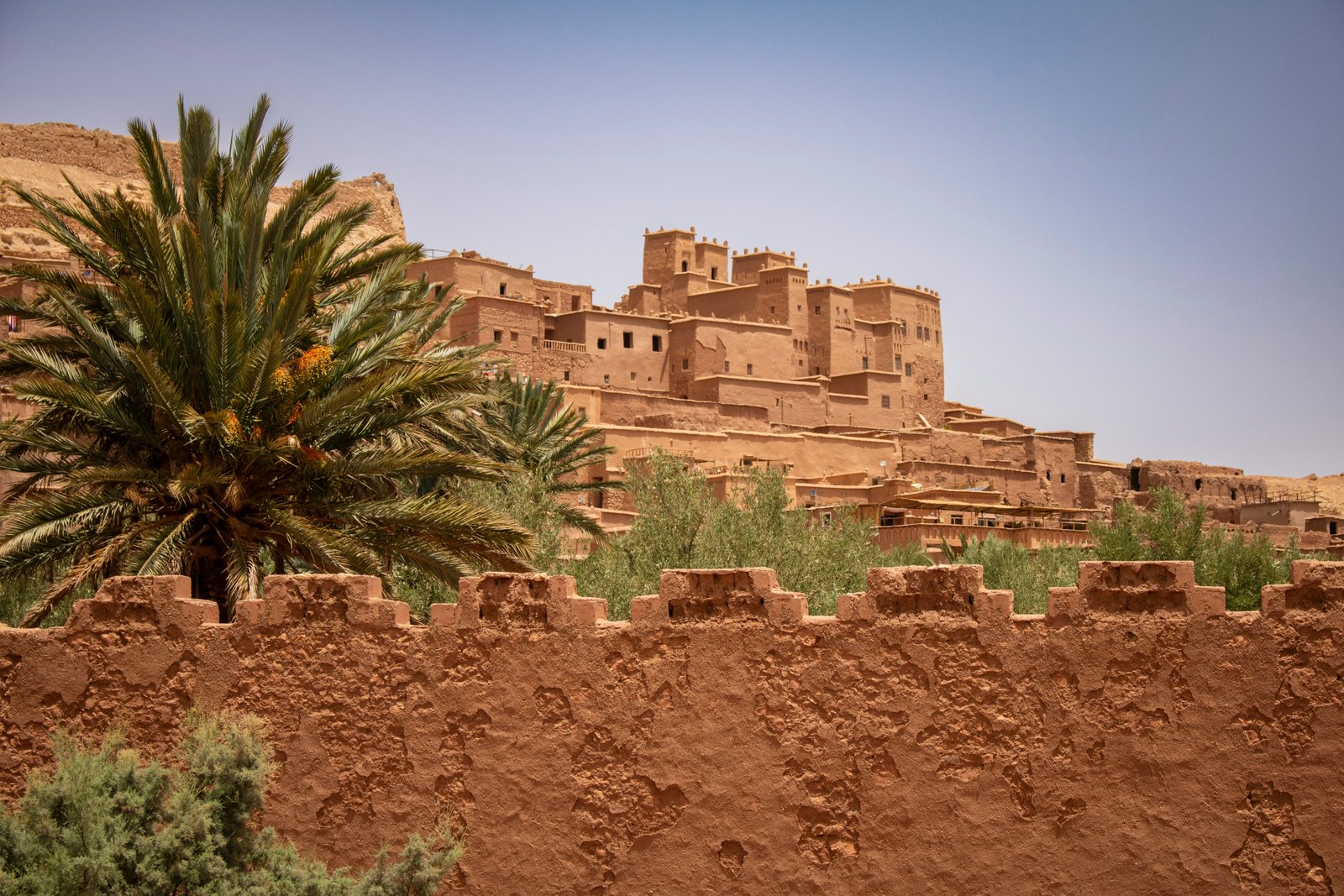
Discover the top travel agencies in Morocco for a memorable adventure. Explore authentic experiences...
Read this article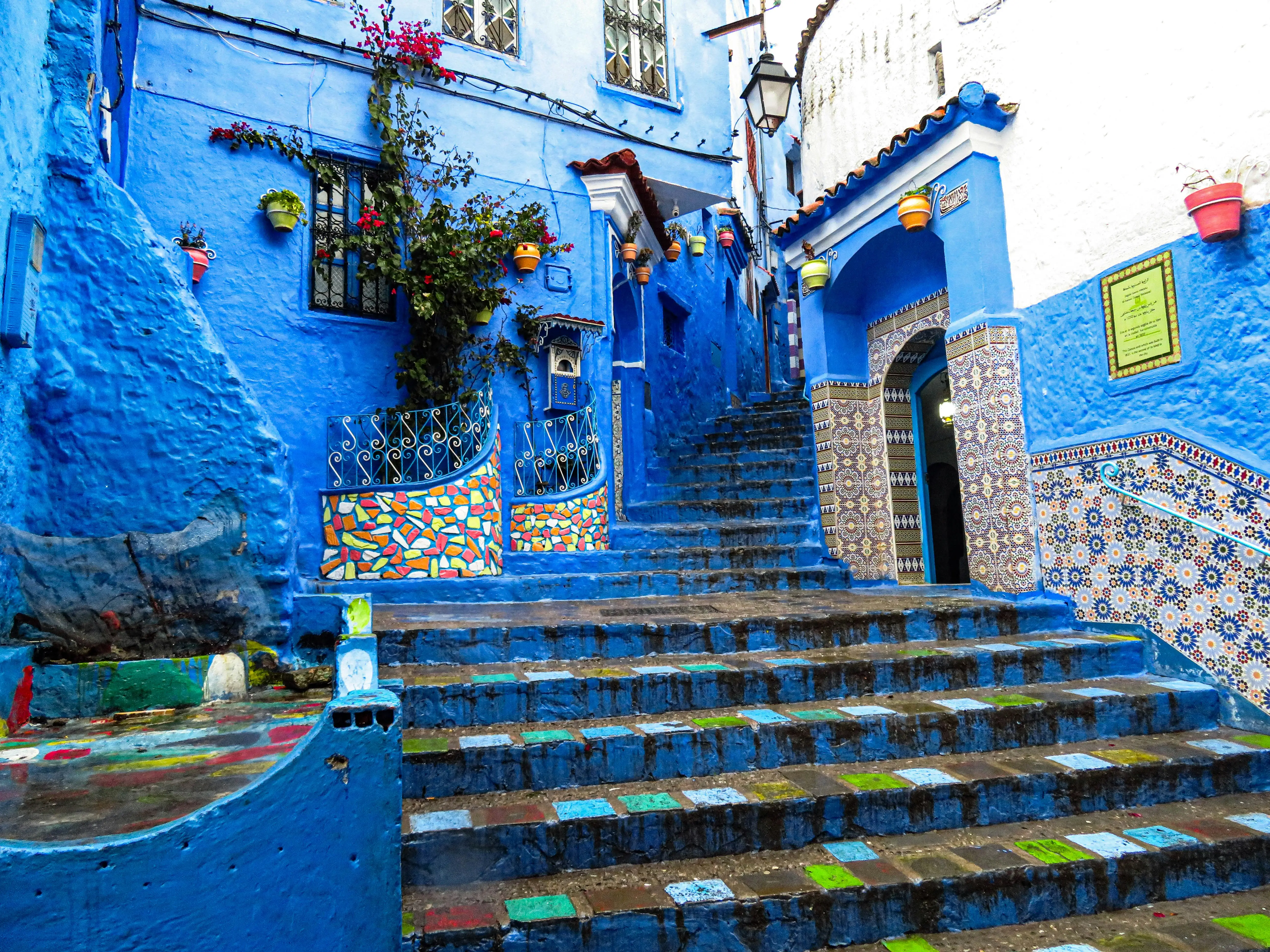
Discover essential tips for traveling from South Africa to Morocco. From visas to local culture, pre...
Read this articleWant cool tour deals and tips about Morocco? Enter your email and we’ll send them to you each month!